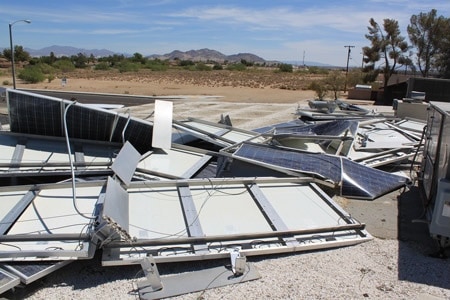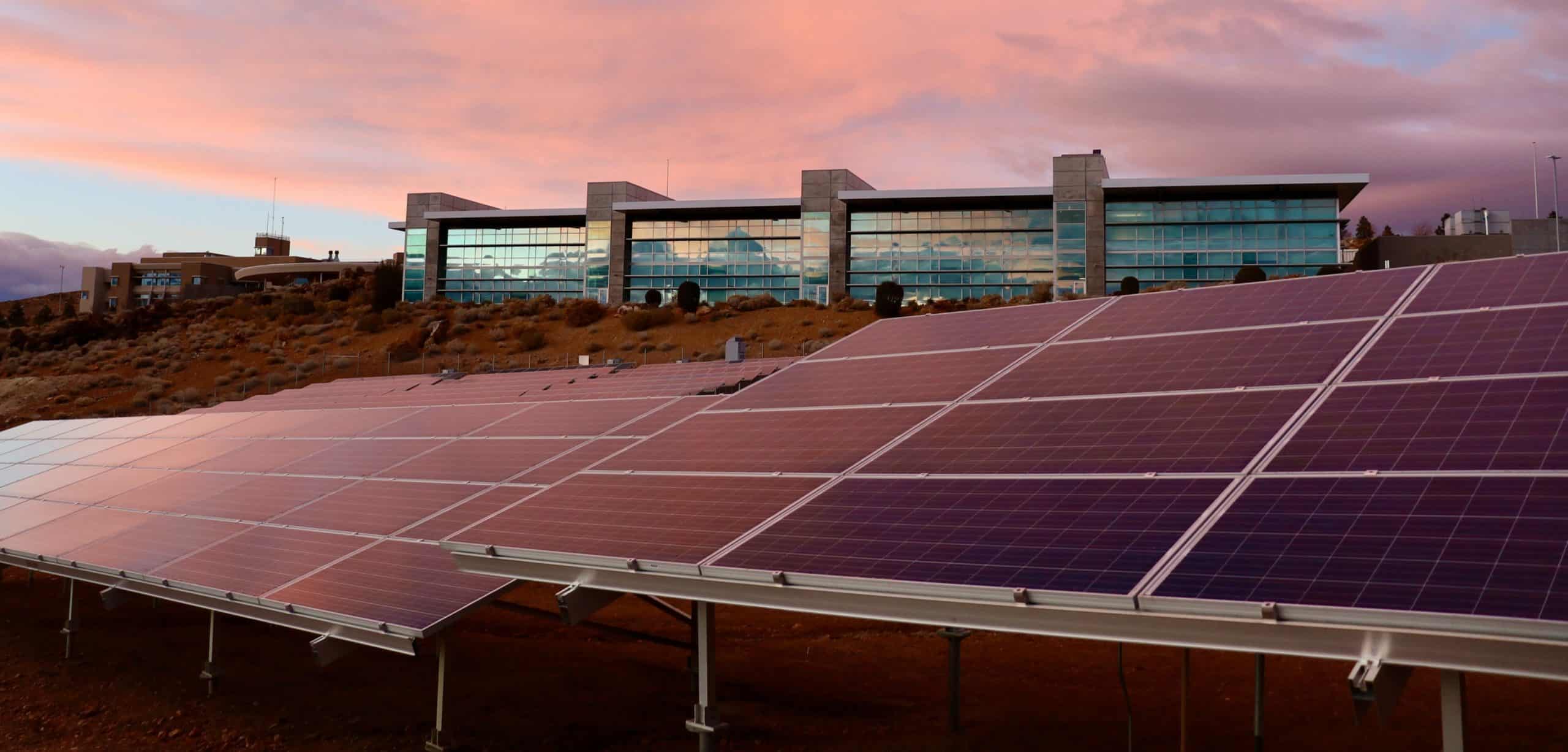Save Now, Pay Later.
With flexible payments from handypay.
Save Now, Pay Later.
With flexible payments from handypay.
Published

How often have we heard over the last month or so on the weather forecast: ‘chance of damaging winds’?
Then the house rocks and rolls all night with some seriously rambunctious gales, followed by Facebook posts the next morning regarding ‘have you seen my trampoline?’ or ‘whose trampoline is hanging out of my porch?’
But it is Tasmania. We live on a windswept island. It happens every year and as Taswegians, we are used to it, possibly to the point where we do not consider all the possible ramifications.
Solar systems are on your roof and it’s not a long bow to draw to say these are exposed to the high winds year after year, especially those systems on tilt legs. They stick out like a sore thumb. They catch a lot of wind and can create a lot of lift.
Solar racking is typically comprised of aluminium and stainless steel fixtures and they heat up and cool down every single day. This means they expand and contract, expand and contract and then have the guts shook out of them for a few months every year during gale season.
What do you think can happen to these racking components over time?
Yes, they can become loose.
I think it’s not explained thoroughly enough to people that solar has to be periodically serviced now and then. Especially panels on tilt legs as these are more susceptible to wind events and loosening.
Many systems out there have had no one look at them for over a decade, when they should be looked at every 3 or so years.
What else do you think we should be checking on our solar system?
Wiring. It’s one thing that can fall down and lay on the roof, it can chaff away the insulation over time, or trap debris which in turn can accelerate corrosion on your roof.
But probably the most important electrical item to check is the roof top isolator. These are a switch enclosed in a plastic box that sit on your roof that are never used and have a bad habit of failing and in the very worst case scenarios catching fire. Did you know we are the only country in the world that mandates them as the rest of the world thought: ‘how dumb would it be to put a plastic box on a roof containing a switch no one ever uses?’ The collective agreement was ‘who would be a big enough moron to use those?’ and Australia said ‘hold my beer’ and put them up on every single roof.
(As a side note there is huge industry push to remove these horror shows from roofs!)
The message here is do not think solar systems are completely maintenance free, they are not. It has to be remembered they are energy harnessing devices that while the risk is low, still do carry some risk if not given some periodic maintenance.
Let’s look at what can happen.
Panels blow off your roof. Typically being around 18 kilos and a metre wide by 1.7 metres long they have the potential to make a quite vicious frisbee and not one you would want to catch. In one particularly bad year for gales, we had to quote 19 solar systems to repair for insurance companies that had blown off roofs or been damaged by high winds.
Isolator fatigue is when the isolator can fill up with water or they can develop a high resistance joint in them. The boxes go brittle over time and crack. But this is the most alarming thing given the incessant demands to be the cheapest price in solar systems and we are still seeing the cheapest components being used. These fail more quickly or even worse, have been recalled for safety issues but they still remain on roofs.
So those out there with solar systems with some age on them, and you will (or at least should) know if they have never had anyone look at them. Especially those too- good-to-be-true value systems you used to see (and still are) TV are really ageing badly now. While DMS Energy have always had a focus on longevity with all products we provide at install, my experience over the last 11 years is we are the exception to the rule, particularly as 30% of our solar work is now repairing or replacing orphaned systems that have not stood the test of time very well at all.
DMS Energy services all types of solar systems. We check that they are structurally sound, electrically sound and all the components are as they should be, and we only charge $150 to perform this vital check up.
Also this segment hopefully highlights the importance of selecting local companies that use high quality components who have nowhere to hide if it all does go pear shaped down the track. Solar is truly one of the things where product selection is critical if you ever want to see a true return on investment over the longest time period. That’s why we use LG solar panels and SolarEdge inverter systems. More robust, more efficient and the longest industry warranties backed up by some of the most profitable and financially secure manufacturers in the world.

Simple, Low Rate Green Loans

Introducing award winning finance provider, Handypay, to bring you the most Competitive, Flexible and Versatile finance solution available in the home improvement industry today!
We have partnered with Handypay so customers can access a simple, affordable green loan for their solar panels and home batteries. Get a no-obligation quote and pre-approval in minutes, not weeks.
DMS Energy strives to Honestly, Ethically and Accurately assist Tasmanians to meet their energy reduction goals.
DMS Energy have advised countless locals on the right energy solutions for their home’s and business’s.




DMS Energy are not your typical energy efficiency salesmen! We are long time locals offering expert advice on solutions that are tailored to your individual needs. Talk to one of our experts today.